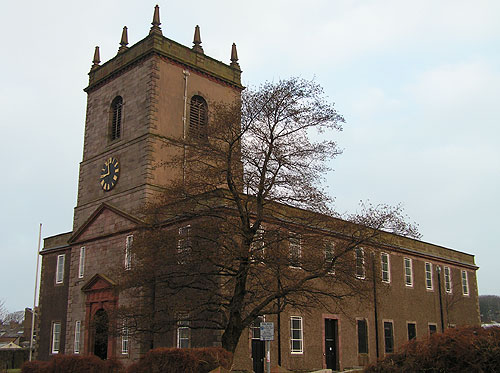
Obviously named, High Street is the uppermost part of Whitehaven town centre as it expanded up the hill on the North-east side. It was probably built around the 1750's. Connecting the top end of Scotch Street with Wellington Row it is dominated by St. James's Church with its imposing view down Queen Street.

St. James church was built in 1752, when Whitehaven was well established, by Carlisle Spedding, the celebrated mining engineer. He lived adjacent to Trinity Church, and produced St. James with a similar design, but on a grander scale. The inside was decorated in classical style and is said to be one of the finest Georgian church interiors to survive.
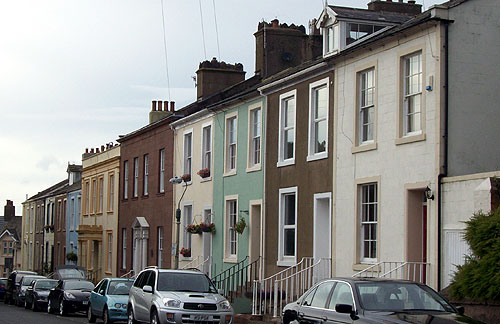
At the North-west end of the street is a fine terrace of two-storey 18th century houses which overlook a small park sometimes known as the swing field, where once stood a windmill seen in the painting by Matthias Read, that gave the name to Windmill Brow.
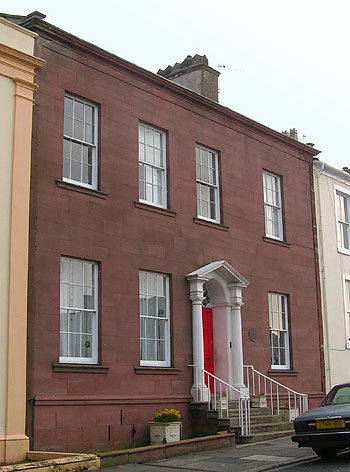
The two largest houses on the middle of the terrace were owned by the Miller family who ran the local tannery. John Fletcher Miller the noted meteorological scientist, and Fellow of the Royal Society, lived at number 7 with his father William Miller, who owned the local tannery with his brother Joseph, who lived at number 6 with its castellated portico.
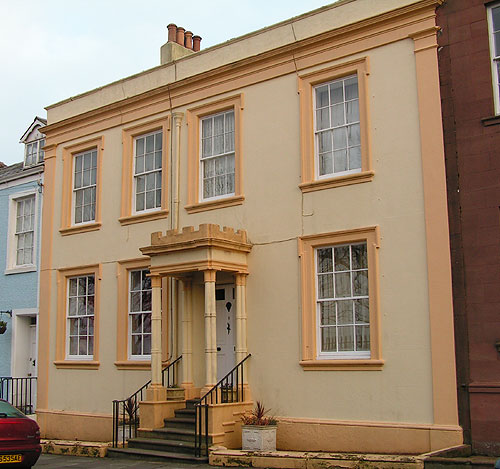
Just before Queen Street is the infants section of St. James primary school. It has recently invested in spiked steel palisade fencing and razor wire like some inner city sink estate, much to the detriment of the Street and the previously warm welcoming nature of the school. This is followed by the church parish hall which provides a great resource for the community with a daytime pre-school playgroup and nightly exercise classes etc.
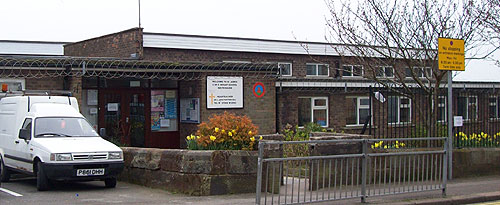
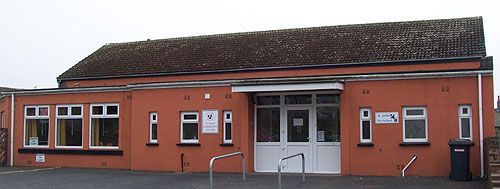
Next is a strange, short, fat, brick built chimney which gives a clue to an underground secret. Beneath High Street runs a railway tunnel connecting the Bransty Station with the one at Corkickle and this is the top of a ventilation shaft. At the right time of day you can hear the train rumbling beneath.
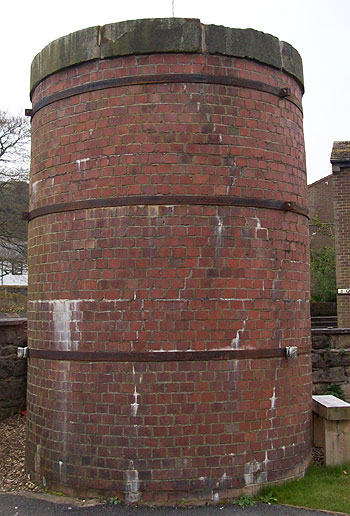
The tunnel was completed in 1852, long before the London Underground was even planned - a subterranean railway tunnel, connecting two stations in the same town to avoid traffic on the surface - surely this gives Whitehaven claim to the world's first underground passenger railway system? There are 4 more ventilation shafts in the White Park.
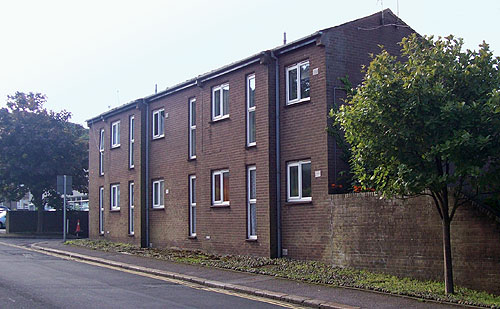
St. James Court is a modern collection of apartments as is Piper's Court across the road which runs along a small lane leading to Rose Cottage. Although both sets of apartments are quite attractive, James court is brick built like the school and the styling of Piper's court is more Georgian leading to High Street being effectively split down its axis into a modern side and an old side.
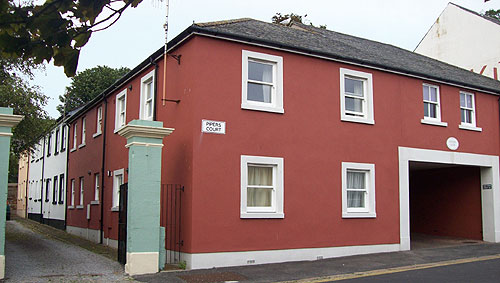
Piper's Court is named after Piper's Marine School which was on the site. The school was built in 1818 from a bequest by Piper to form a school for the education of local boys in nautical studies such as mathematics and trigonometry and opened in 1822. When the school was sold the money was used to provide the site for Whitehaven Grammar school. Matthew Piper was another Quaker whose frugal life enabled him after his death in 1820, aged 91, to use his money to help others. As well as the school he also left £1000 bequest, from which the £50 interest created a soup fund which was used provide soup twice per week to many families in dire need of such nourishment for over 150 years.
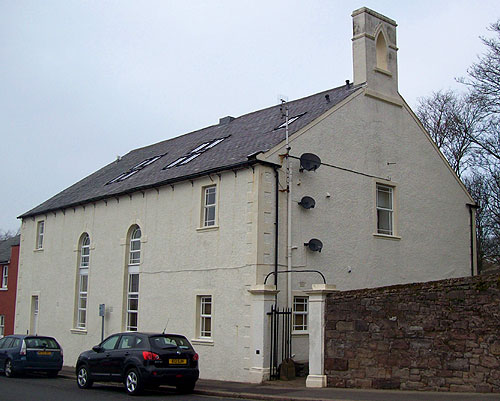
Beyond this is The Kirk, formally the High Meeting House, with its small graveyard to the side. On the map of about 1830 it is marked as the United Secession Chapel.
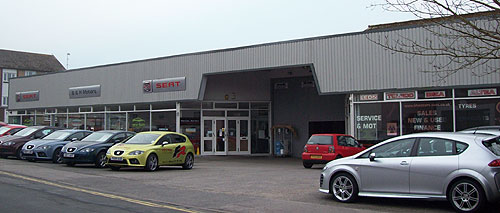
Opposite is the Seat Garage, previously owned by Bill Brown's motorcycles which is on the site of the old tannery. The back wall on Peter Street appears to be part of the original building. Israel Younghusband, the linen draper acquired the land from Sir James Lowther in 1749. George Miller, father of William and Joseph, bought the land from a bankrupt Gabriel Griffith who had held it for just 3 years in 1764. The Millers, who were prominent Quakers, ran it as a tannery. In 1858 William Walker bought the tannery and his son Herbert Wilson Walker expanded the business to tanneries all over the country. The Whitehaven tannery was expanded to the old work house on the other side of Scotch Street by a connecting two tier covered wooden bridge. Herbert Wilson Walker became mayor of Whitehaven and used his money charitably; presenting Whitehaven Castle to the town as a hospital and even selling Scawfell to the Fell and Rock climbing club for a nominal sum. This is how it came to be owned by the National Trust for the benefit of everyone. The tannery closed in 1958 after nearly 200 years of existence.
© WAWL 2009